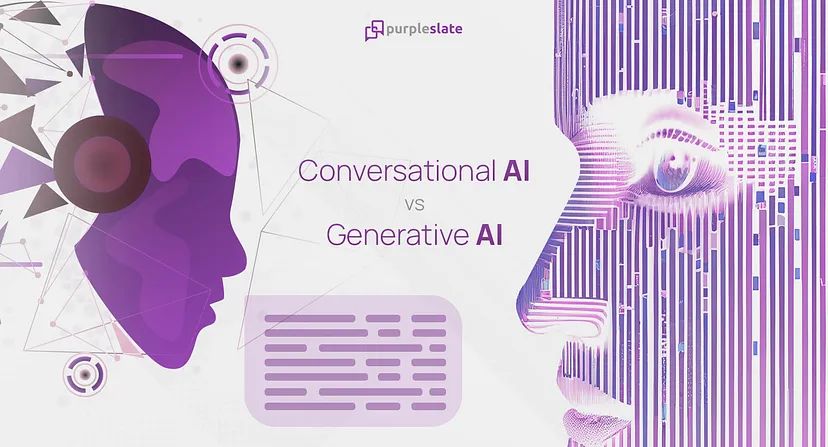In the rapidly growing landscape of artificial intelligence, two prominent domains have captured significant attention: Conversational AI vs Generative AI. While both these terms fall under the broad umbrella of AI, they cater to distinct objectives, employing diverse methodologies to achieve their goals.
The article below outlines the distinctions between Conversational AI and Generative AI. Shortly, Conversational AI is focused on facilitating human-like interactions and communication through technologies like chatbots and virtual assistants. It employs rule-based systems, pre-defined scripts, and Natural Language Processing (NLP) to understand and respond to user queries in a contextually relevant manner.
On the other hand, Generative AI is concerned with creating new content, such as images, text, and audio, rather than just responding to input. It relies on generative models like Generative Adversarial Networks (GANs) and Variational Autoencoders (VAEs) to learn patterns from data and generate novel instances that follow those patterns.
The article highlights that while Conversational AI excels at providing instant and accurate responses, it might lack creativity and flexibility in generating diverse content. Generative AI, in contrast, has the potential to create original content but might sometimes produce less coherent or contextually accurate outputs.
The distinction between the two types of AI is drawn through their primary goals: Conversational AI aims to simulate human-like conversations, while Generative AI aims to create new data instances. However, the article emphasizes that there can be an overlap between these fields, as Conversational AI can incorporate elements of Generative AI to produce more creative and dynamic interactions and vice versa.
The full article is available on Medium, accesible from here.













